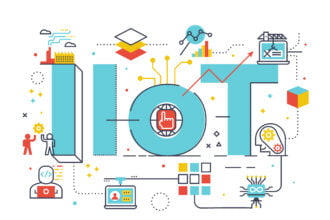Every BI Manager must know that the 3 key expectations that any business group has from their BI infrastructure are data availability, data reliability and data completeness. Even if one of these is not fulfilled, the business will not be able to make the right decisions.
Every BI Manager must know that the 3 key expectations that any business group has from their BI infrastructure are data availability, data reliability and data completeness. Even if one of these is not fulfilled, the business will not be able to make the right decisions.
- Data Availability – Availability of relevant data when you need the most is prime. Data that is present within the enterprise, but not accessible for decision making, is deemed useless
- Data Reliability – Data quality must be ensured in order to make the right decisions. Incorrect data leads to incorrect decisions
- Data Completeness – Incomplete data leads to partial understanding of the truth and may leave holes in understanding the data holistically
The following diagram shows how the 3 expectations are interlinked and the solutions available to meet those expectations.

Though these solutions may address the 3 key expectations, how does a BI manager ensure alignment with Business goals? The answer is in developing a BI Strategy/Roadmap that helps bring a structure and a focus to all BI activities within the organization. The Roadmap must include developing a BI framework that supports not only the architectural components but also covers the governance, processes and technologies that hold them together.

Following are a few tips in developing a BI Roadmap.
- Vision/Goal – State the Business Goal and IT Goal side by side and show how your BI goals are aligned to the Business priorities
- Current State – Using a pictorial representation, display the current state architecture or process through which the Business is currently accessing data for reporting and analysis. You may also show the different business groups/divisions and their current data needs and their current business process. This should also show the type/nature of data the different divisions report on. Display the level of organizational BI maturity on a scale or in reference to the Level of Analytics.

- Business Problems – List the different problems/issues faced by the business in accessing the data for reporting and analysis. Also list the shortcomings of the current system.
- Objective/Purpose – State the objectives by relating them to what you plan to do to solve the Business problems and the level of BI maturity you and the business wish to achieve. Define the success criteria and ways of tracking the progress.
- Future State – With reference to Levels of Analytics, pictorially represent the future end state architecture along with the future end state business process. State the different questions that the business will be able to answer, the analysis they can perform, the impact that will have on the overall business.
- Plan – Develop a plan (timeline/schedule/milestones) that shows the multi-phase approach that you wish to take in developing the BI infrastructure. Each phase is a major milestone and a building block with well-defined objective and purpose. Pictorially display how the intermediate milestones look like. Refer to the industry standards for building the IT infrastructure (Inmon/Kimball approach, MDM if any, etc.)
- Challenges/Risks – State the challenges and risks that you foresee and the mitigation and contingency plan
Also, the following artifacts must be developed and maintained throughout the lifecycle of BI and can be a great ‘marketing’ material within the organization.
- Architecture diagrams – Current, Future and intermediate phases
- Data flow diagrams – facts, masters, volumes
- Heat Maps – Coverage of data in Red/Yellow/Green
- Job Schedules – dependencies, SLAs, metrics
- Metrics – to track the increase in level of BI maturity, to show increase in productivity, relate it to increase in sales/revenues/better decision making capabilities
IMP: Above post is a featured blog published by Saama Technologies Inc, in the interest of bringing the best share sharing knowledge in BI space.






